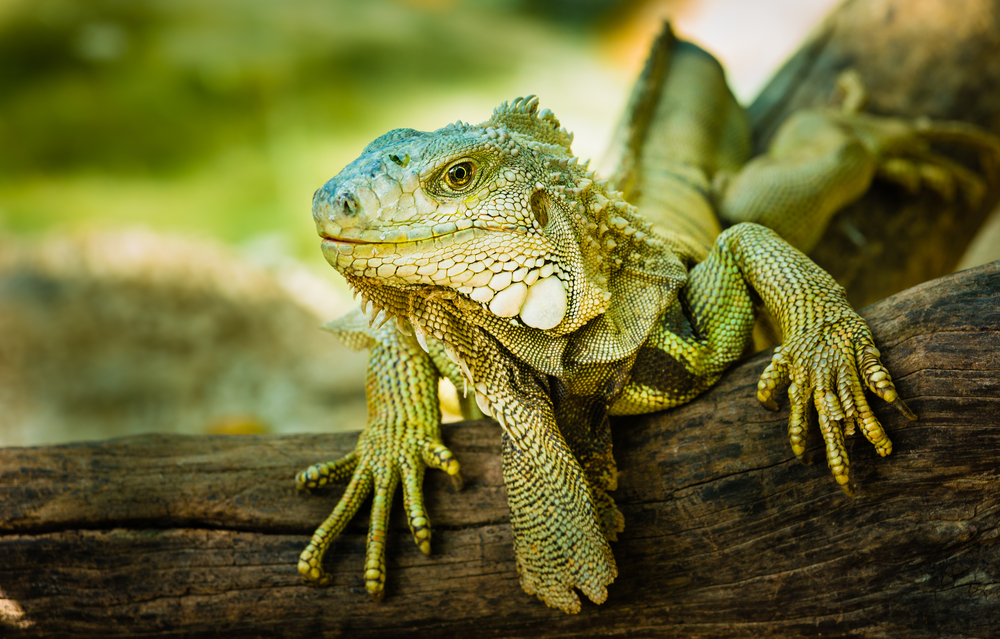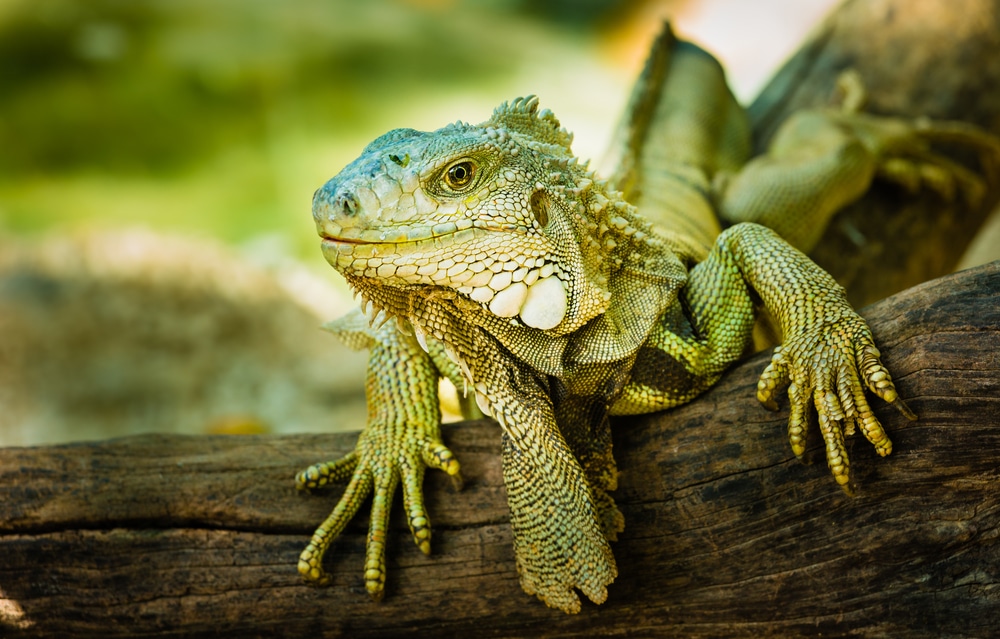How long will a captive green iguana live?
Q: What is the life expectancy of a captive green iguana, if he's taken care of properly?
A: Good question!
I did a little bit of research on this one, and came up with some very interesting conclusions information regarding the green iguana (Iguana iguana).
In the textbook, Reptile Medicine and Surgery (Douglas Mader, MS, DVM, DABVP, WB Saunders Company, Philadelphia, 1996), on page 60, the green iguana is listed as having a record of living for 12 years, nine months, and another source lists this as 19 years, 10 months in the same table. An online search came up with varied ages, from seven to10 years on one site, and 12.4 years documented from a paper published in 1974.
As a consultant for a veterinary lab, I speak with veterinarians who treat green iguanas just about every day. As a routine part of the consultation, I always ask for the signalment, which means the age, sex and reproductive status (intact or spayed or neutered) of the reptile we are discussing. So, I hear about iguanas of all ages and sizes.
It seems that in captivity, most green iguanas make it to nine or 10 years of age before succumbing to kidney disease. I have spoken to vets who have had patients that lived well into their teens and a few that even lived into their 20s. So, while that is possible, it takes an extremely well educated and dedicated owner, in addition to excellent veterinary care, to have an iguana survive that long.
It is my personal opinion that the reason that so many iguanas don’t live into the double digits is because they aren’t provided with a swimming pool for frequent swimming and drinking. I think folks are far too worried about trying to mist their lizard and trying to keep the humidity high enough, when actually, drinking and swimming are vital for proper hydration and for keeping those kidneys at peak function. Because I practice in Florida, where may green and spiny-tailed iguanas live free and reproduce prolifically, I have noticed that they tend to stay along rivers, ponds and lakes, and dive into the water at the first sign of danger. They swim like water dragons and can stay underwater for an impressive amount of time.
I believe that they are much more water-oriented than we give them credit for. So, in addition to providing them with the right temperature range and humidity, a balanced, varied diet, natural sunlight and/or indoor lighting providing UVB, I think all iguanas should have a place to swim (not just a bowl or dish large enough to soak in) in order to remain healthy. This means that the iguana enclosure must be large enough to accommodate a kiddy pool or other type of tub and that this water must be appropriately warmed (by a pig warmer or submersible aquarium heaters). Pig warmers are heating wires ensconced in a fiberglass board that provide warmth when plugged in. They are usually considered waterproof, and can be placed under the kiddy pool to warm the water. Of course, it is also necessary to have a relatively easy way to clean the pool because most iguanas will defecate in the water, if given a choice.
It is very sad to me that so many iguanas die in what should be their prime. I do believe that we can significantly increase the life span of green iguanas. In addition to providing them with proper lighting, temperature and husbandry, a swimming pool and proper nutrition, by also providing your pet iguana with periodic veterinary care (including blood work to monitor kidney parameters, as well as the calcium and phosphorus levels), you should be able to correct any problems before they become irreversible (hopefully).

SHUTTERSTOCK/POUL RIISHEDE
The green iguana is listed as having a record of living for 12 years, 9 months.



